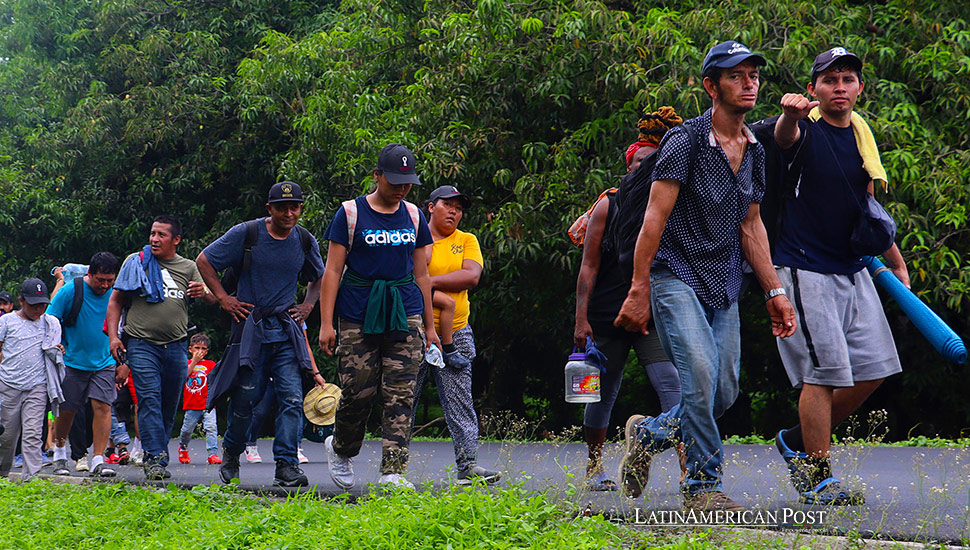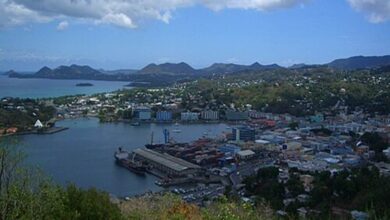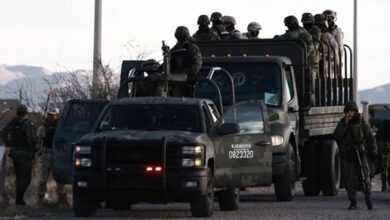Mexico’s Chiapas Violence Displaces Thousands Amid Gang Clashes

Amid escalating violence in Chiapas, Mexico, President Andrés Manuel López Obrador confirmed the displacement of 4,200 residents from Tila after armed gangs attacked the town, highlighting the persistent instability in the region.
In a troubling turn of events, the southern Mexican state of Chiapas has witnessed one of its largest mass displacements in decades. President Andrés Manuel López Obrador acknowledged on Monday that approximately 4,200 residents from the town of Tila fled over the weekend. This departure follows a series of violent attacks by armed gangs, which included gunfire and arson, forcing residents to seek refuge in hastily set-up camps.
The violence in Tila began last week, culminating in a wave of fear and chaos. State prosecutors reported that armed groups stormed the town, indiscriminately shooting and setting numerous homes ablaze. The scale of the displacement is reminiscent of the mass exodus seen in Chiapas during the late 1990s. Photos shared by state authorities vividly depict residents fleeing with only the essentials, carrying small backpacks or shoulder bags.
Government Response
President López Obrador depicted the assault as “a conflict between the very same people” of Tila, suggesting it was tied to a longstanding land dispute among local farmers. However, human rights organizations and local observers attribute the violence to criminal gangs with political connections. The Digna Ochoa Human Rights Center identified a group known as the “Autonomos,” allegedly linked to drug trafficking, as the main perpetrators of the violence. State prosecutors confirmed the deaths of at least two people and the burning of 17 buildings during the attacks.
Despite the gravity of the situation, López Obrador attempted to reassure the public, stating that food supplies were being provided to the displaced individuals in the camps. He emphasized that “things have calmed down” and expressed a desire to start negotiations with the involved groups to facilitate the safe return of residents to their communities.
Historical Context
Chiapas has a tumultuous history marked by conflict and displacement. In 1994, the state became a battleground for the Zapatista indigenous rights movement, which staged an armed uprising against the Mexican government. The conflict led to significant displacements as thousands of people fled the violence between the Zapatistas and the army.
Three years later, in 1997, Chiapas was again thrust into the spotlight following the Acteal massacre, where 45 indigenous villagers were killed. The killings, driven by land and political conflicts, forced thousands more to flee their homes. These historical events have left a lasting impact on the region, where land disputes and violence have continued to simmer.
The current violence in Chiapas is exacerbated by the region’s strategic location near the Guatemala border, making it a key route for drug and migrant smuggling. Rival drug cartels have frequently clashed in the area, further destabilizing local communities. President López Obrador has often downplayed the violence in Chiapas, accusing media reports of sensationalism. However, the recent mass displacement underscores the persistent insecurity and the government’s struggle to maintain peace in the region.
Human rights organizations have repeatedly highlighted the extortion and roadblocks set up by criminal gangs in Chiapas, which have become a regular part of life for many residents. The recent attacks in Tila are a stark reminder of the challenges the local population faces and the urgent need for effective government intervention.
A Call for Peace and Stability
In light of the recent events, there is an urgent need for a comprehensive strategy to address the root causes of violence in Chiapas. This strategy must go beyond immediate relief efforts and aim to establish long-term peace and stability. The government’s response should include strengthened law enforcement, social and economic development programs, and active engagement with local communities to address their grievances.
The displaced residents of Tila now rely on the government and humanitarian organizations for support. Ensuring their safe return and rebuilding their lives should be a priority. This requires a collaborative effort from national and international stakeholders to provide the necessary resources and support.
The recent violence in Chiapas serves as a stark reminder of the ongoing challenges faced by many communities in Latin America. The region’s history is replete with conflict, displacement, and social upheaval. Addressing these issues requires a multifaceted approach that combines security measures with efforts to promote social justice and economic development.
As the situation in Tila unfolds, the Mexican government must demonstrate a commitment to protecting its citizens and ensuring their safety. The displacement of thousands of residents is a humanitarian crisis that demands immediate and sustained action.
Also read: Mexico’s Ruling Party Secures Lower House Super-Majority, Misses Senate Threshold
The mass displacement of 4,200 residents from Tila, Chiapas, highlights the severe impact of violence and instability in the region. President López Obrador’s acknowledgment of the crisis and the government’s response marks a critical moment in addressing the ongoing challenges in Chiapas. With a history of conflict and displacement, the state requires a concerted effort to restore peace and support its affected communities. The international community and national and local leaders must work together to ensure a future where residents can live without fear and build a prosperous and peaceful life.





